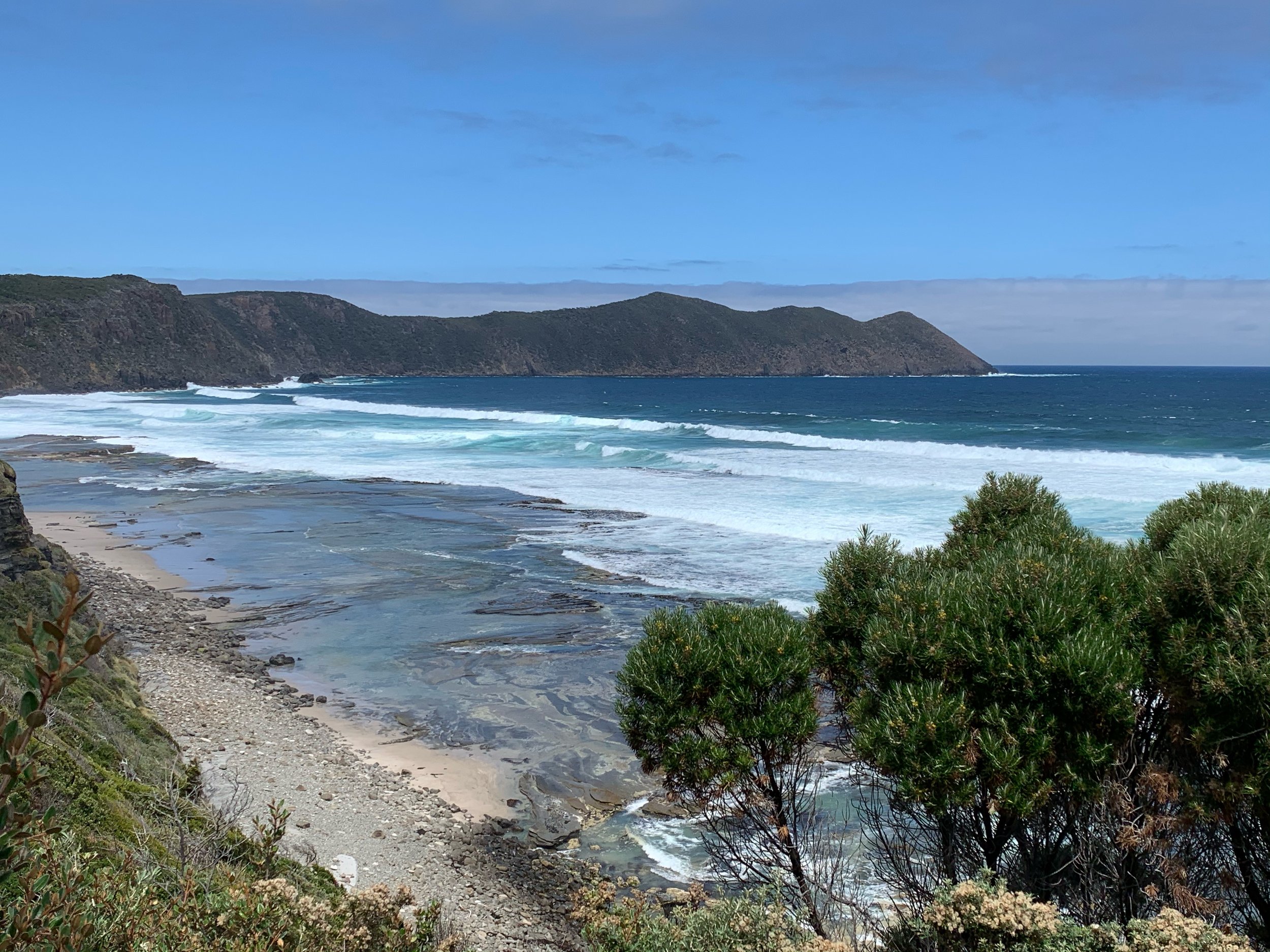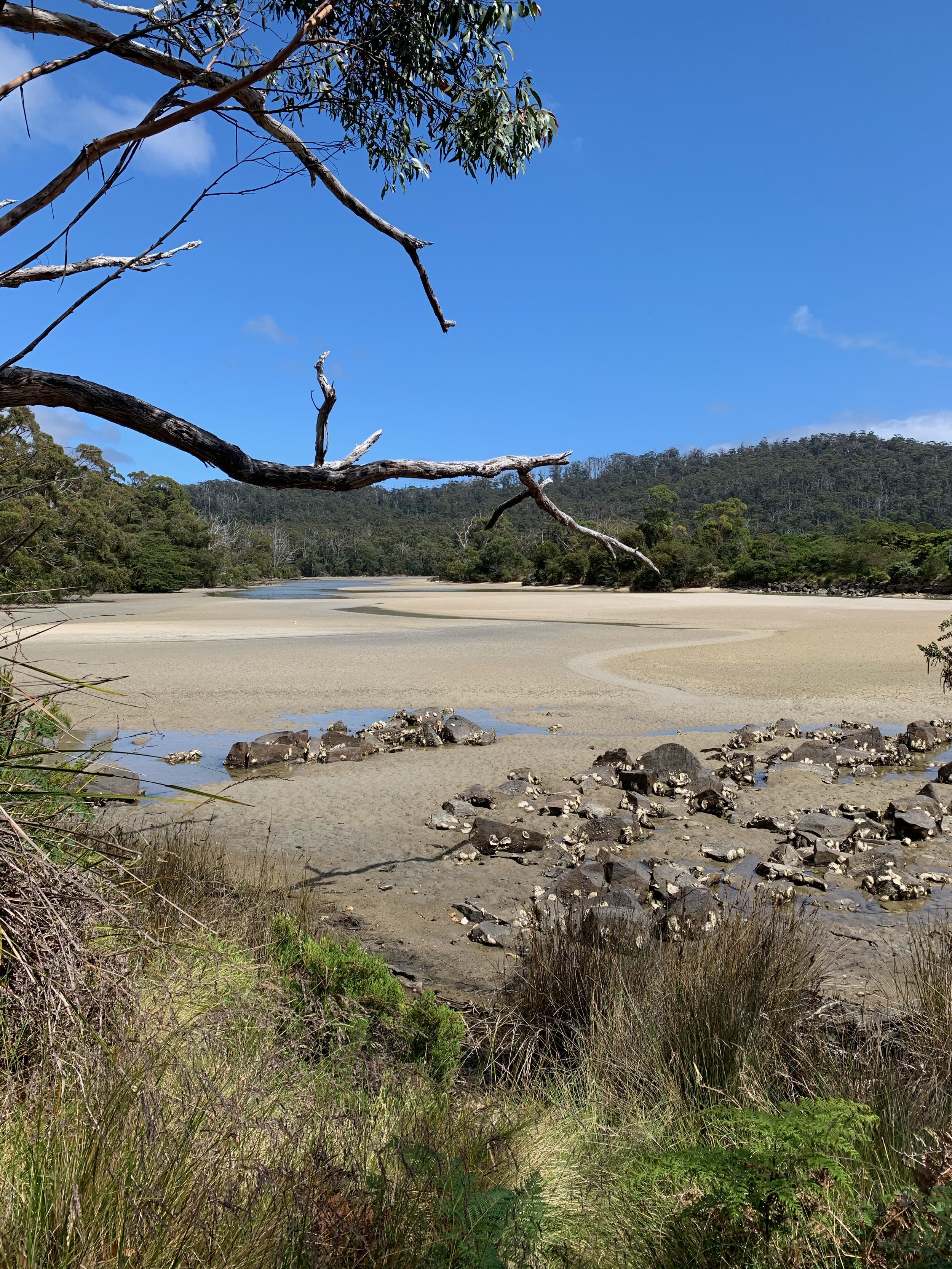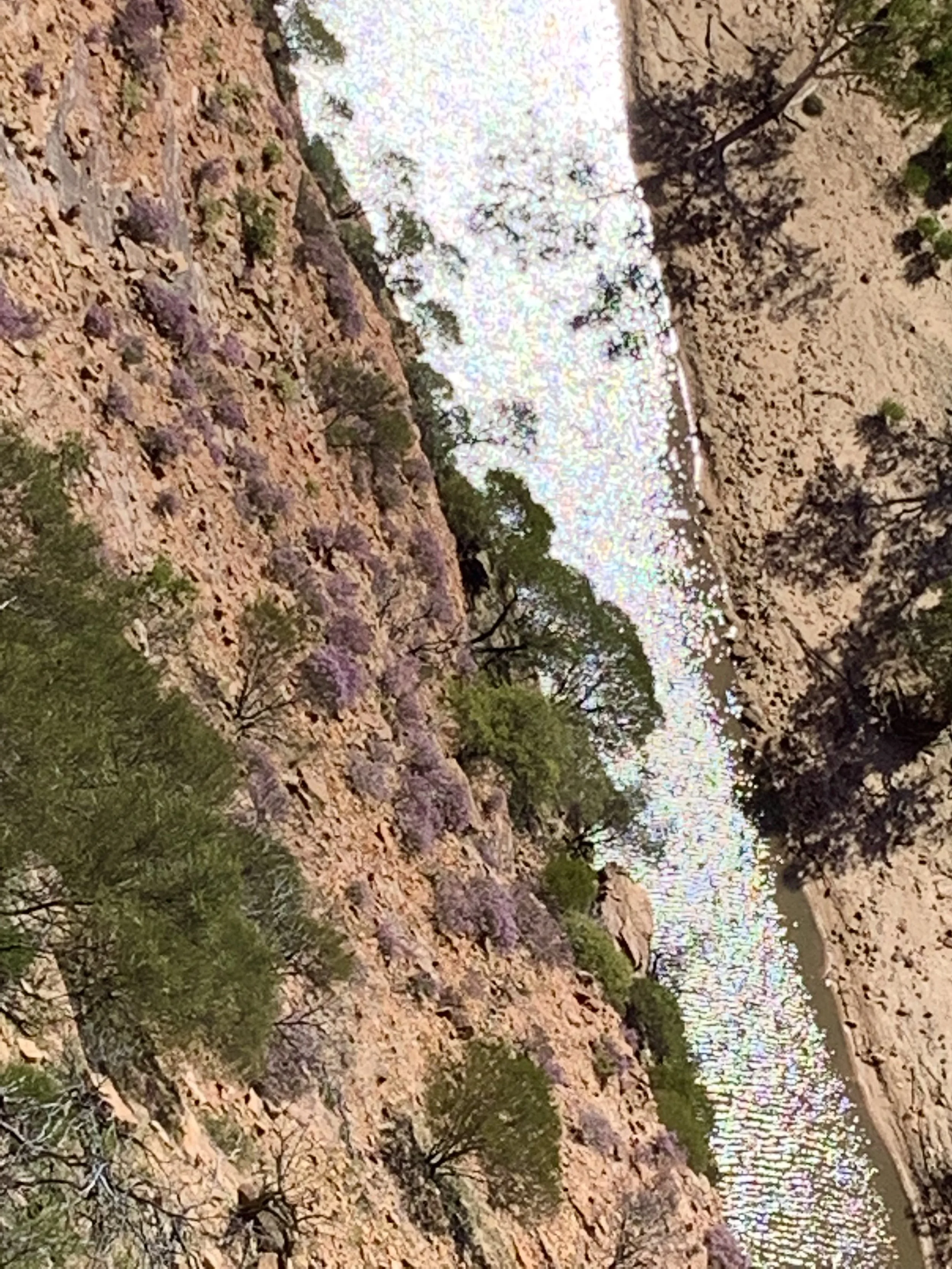To the wild side
One afternoon recently, I’d barely sat down with a great book, How to Read a Tree, when a vivid picture randomly popped into my head. I was walking west along what I soon concluded was the South Coast Track in Tasmania. A warm sun shone from a vivid blue sky, which is seldom guaranteed in those parts. There were few other people in this wilderness: and I was feeling an enormous sense of anticipation and joy.
There was no obvious connection between reading trees and my recollection. I put the book down immediately: I needed more details of the flashback. At first I assumed there must be a blog post about a hike in the South West World Heritage Area, but there was no such thing. How could I not have written about such a brilliant walk?
There may be several reasons why this story never saw the light of day at the time or since; why there was only one post from the Bruny Island trip to Tassie in January 2021. Perhaps the South Coast Track popped into my brain in July 2023 so that I could put that right, but it matters not: writing is reliving, and I have just revisited a special place.
We’d identified the Track as a walk we’d like to do while staying in Strathblane on the Esperance estuary on Tassie’s calmer east coast. This would almost certainly be our last visit to the Apple Isle: we’d soon be calling time on our Australian adventure and returning to the UK. It was a now-or-never moment. We needed at least half a day to reach South Cape Bay and back.
Previously, we had stood on the Edge of the world on Tassie’s northwest coast; sailed up the Arthur River through the Tarkine Wilderness; and flown over remote rugged coast and alarmingly inaccessible mountains in the Southwest. One last adventure beckoned. Walking the South Coast Track ideally required dry and not-very-windy weather conditions. It was 7 January, so Aussie summer, but southern parts of the most southerly state still required a certain amount of finger-crossing and sacrifices to weather gods.
Note: walking this 85-km track is not without risk. We walked about 15 km for 4-5 hours in near-perfect conditions. The weather can change abruptly at any time of year. Make sure you are adequately prepared for a range of possibilities, and, most importantly, wear appropriate boots. Read more about it here.
Cockle Creek calm
The morning of the only day we had left to do this dawned promisingly clear and sunny: we couldn’t have ordered better. We drove from Dover via Recherche to Cockle Creek – the end of the road – and parked a little way beyond, at Ida Bay. There seemed to be a lot of people milling about, but it turned out they weren’t doing what we were doing. By the time we were ready to walk, it was 11:15.
A hundred metres or so of easy path turned into something resembling a rock-strewn river bed for a couple of kilometres. Rainforesty woodland transitioned into open eucalypt, beyond which a boardwalk enabled a much faster pace on the flat across marshy Blowhole Valley.
Walking in the open was somehow speedier, and uplifting on such a glorious day. It took slightly longer to reach the west coast than the sign had said – two hours and 20 minutes for us. We could hear the roar of big surf long before we could see the ocean. Woodland added to the drama of reaching South Cape Bay, and meant we couldn’t see the sea until we were right on top of it.
Then wow, the remote and relentless Southern Ocean. What a contrast to the benign east.
My friend on the edge
Looking to the South Cape ranges
There was, of course, a huge temptation to walk on: down to the deserted beach; across to the next headland and whatever lay beyond. The dark shape in the middle distance of the picture above is in fact a small island called Lion Rock. Did we have time to walk just that little bit further?
It was certainly time for a reality check. We couldn’t get significantly further on down a Track that takes at least six to eight days to complete. So we climbed back up to find a more sheltered spot in the trees for lunch and a little rest before heading back east. It took much the same time to walk back to Cockle Creek.
We walked from Recherche Bay to South Cape Bay (see map below). To have gone on would have meant carrying supplies in order to camp overnight and eat energy-boosting meals. There are no facilities at all so you have to take everything you might need – for sleeping, inclement weather, temperature extremes, changes of clothes, first aid and lots of water.
There is no doubt our walk wasn’t long enough, but it was wildly enjoyable. I recently came across a photo of the South Coast Track I’d taken on another occasion, when we flew over the South West Wilderness to Melaleuca. It doesn’t look much, but it is; and it was. Wish we’d had more time.
Colourful grasses + UFO
Buttongrass plain and eucalypt forest
Bright greenery
Shy echidna
Critter






















